Many of the targums are translated and easily accessible to the English reader, for Targum Neofiti and Targum Pseudo-Jonathan, see The Aramaic Bible (
Proto-Palestinian Targumim Traditions
Paul V. M. Flesher has argued that a
synoptic comparison of the complete Palestinian Targumim of the
Pentateuch––Targum Neofiti (TgN), Pseudo-Jonathan (PsJ), Fragment Targum Paris
(FT-P), and Fragment Targum Vatican (FT-V)––reveals the elements within these
translation expansions that are the most ancient.[i]
Each of the complete Palestinian Targumim has distinct traditions, yet they
also share expansion traditions. In short, the expanded passage traditions that
are shared by the four complete Palestinian Targumim (TgN, PsJ, FT-P, FT-V) are
probably older than any of these witnesses to the common traditions. Based on a
series of deductions relative to agreements and disagreements of the four
complete witnesses to the Palestinian Targumim, especially in Genesis 49,
Numbers 21-24 and Deuteronomy 32-34, the synoptic witness to the
proto-Palestinian Targumim can be extended to the traditions upon which TgN and
FT-V agree.[ii]
Relative to the Palestinian Targumim of Genesis 28-50 Flesher offers a
“Proto-Palestinian Targumim” diagram.[iii]
Table
W: The Relationship between the Proto-Palestinian Targumim and
the Complete Witnesses to the Palestinian Targumim Traditions

The list below summarizes a synoptic
comparison of expanded passages in the Five Books of Moses of the Palestinian
Targumim in relation to TgN.[iv]
Only TgN passages which are at least fifty percent longer than the MT are
considered as expansions here.[v]
Parentheses enclose the approximate size of the TgN expansion in relation to MT
(e.g., “(2.0X)” means that the TgN expansion has twice as many words as the
verse in the MT). Brackets enclose Hebrew verse references when
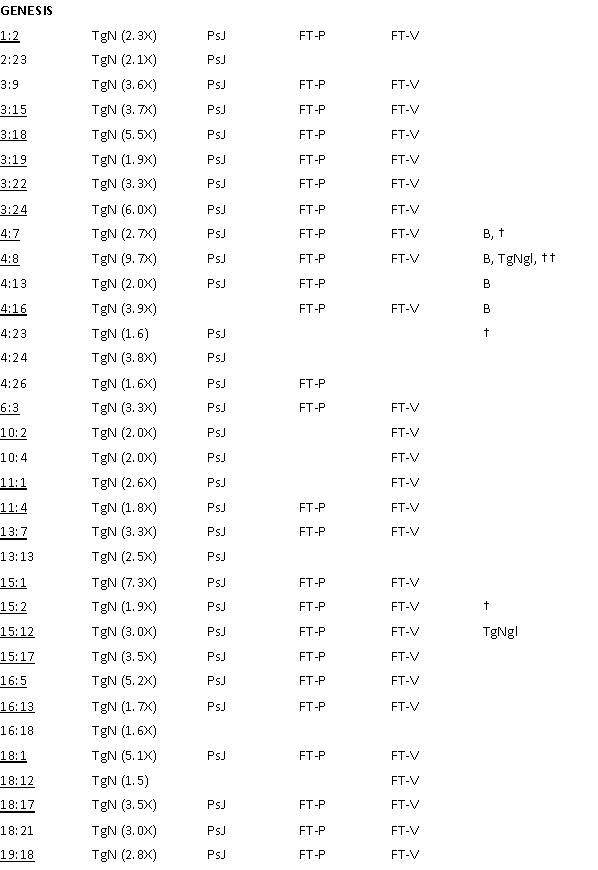
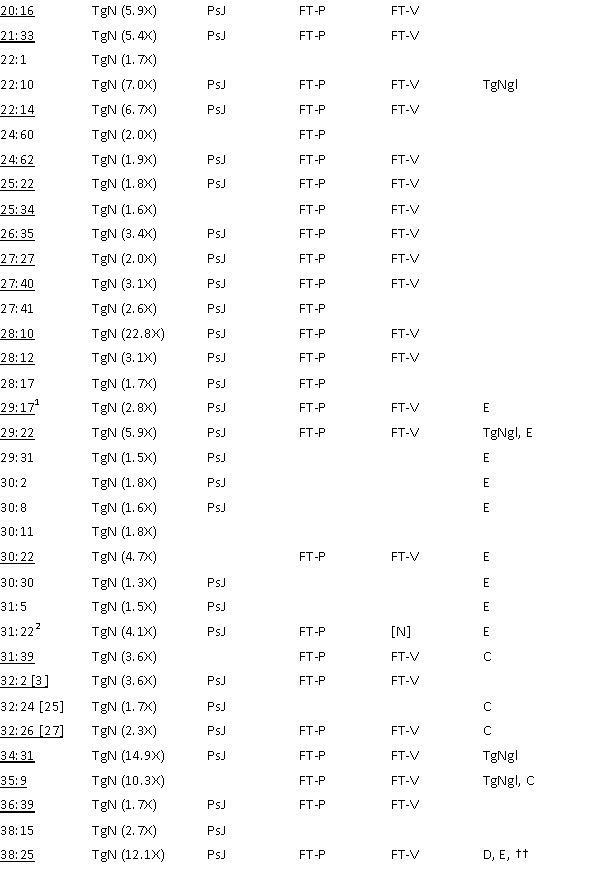
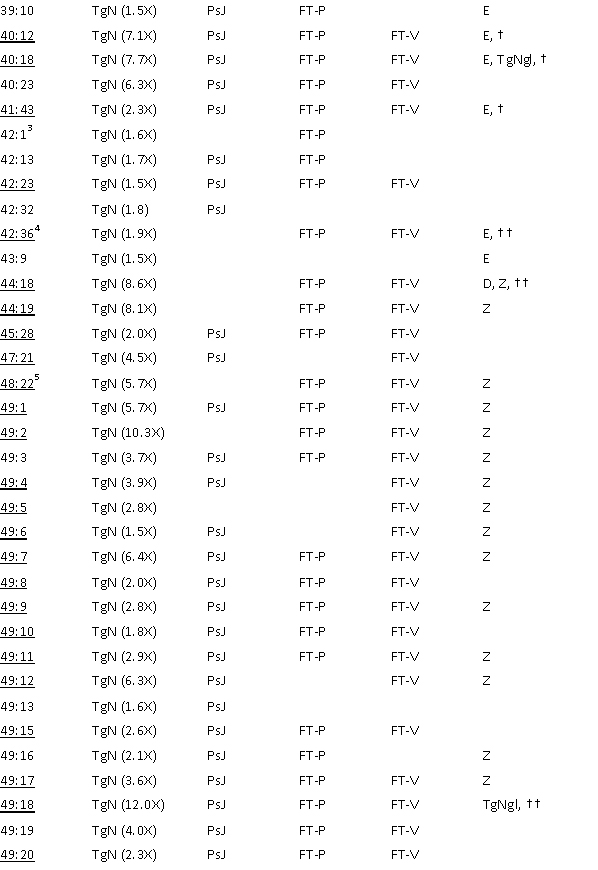
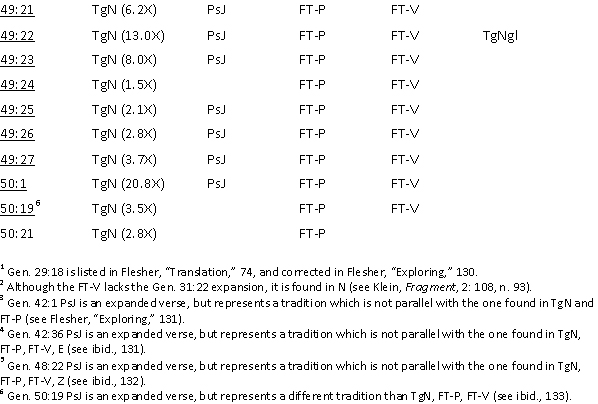
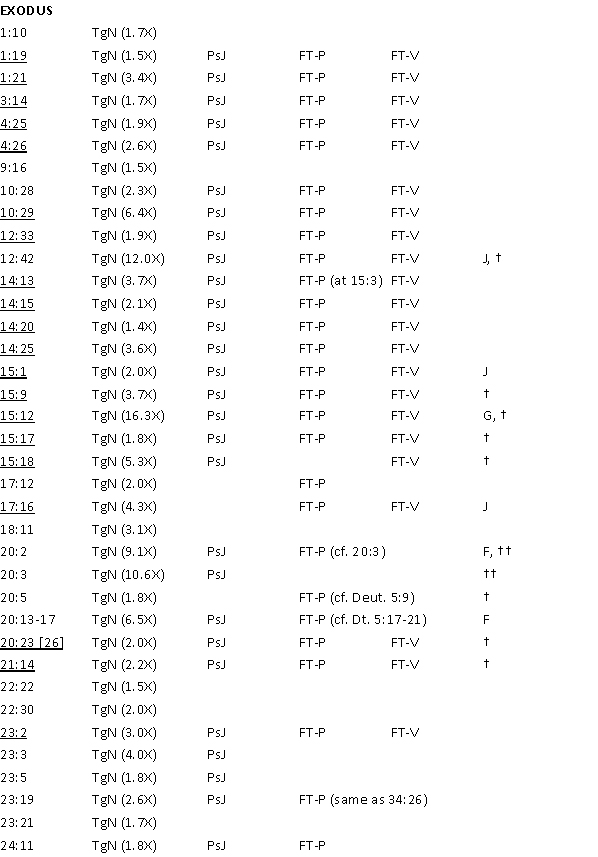

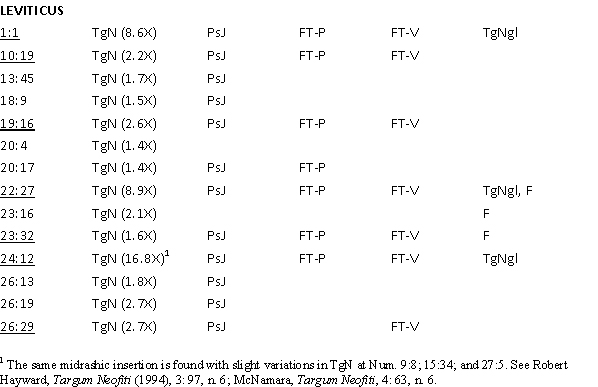
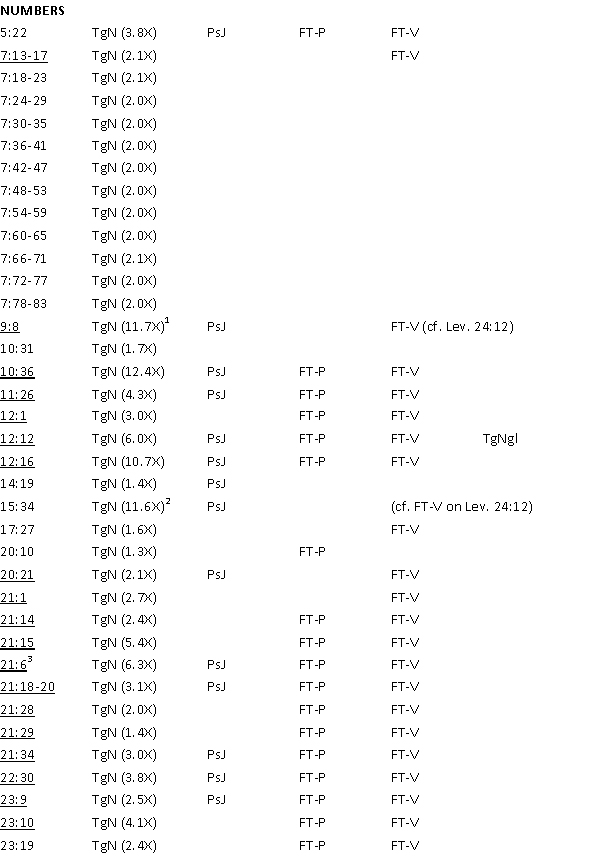
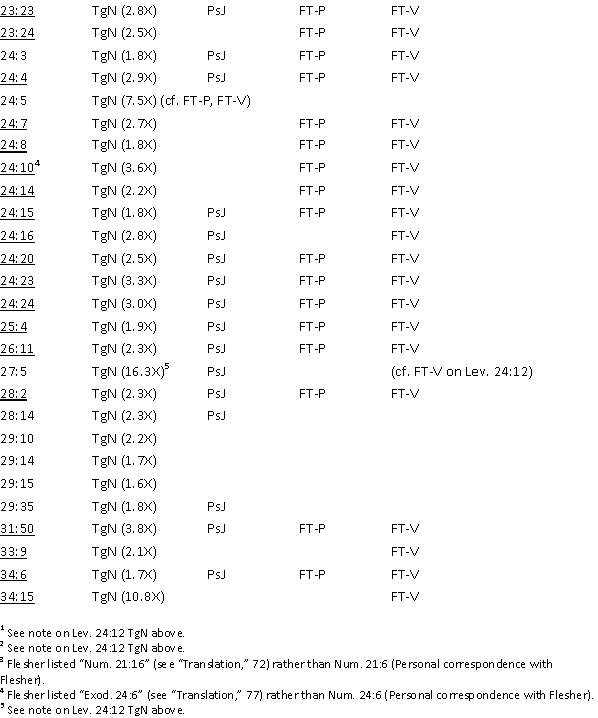

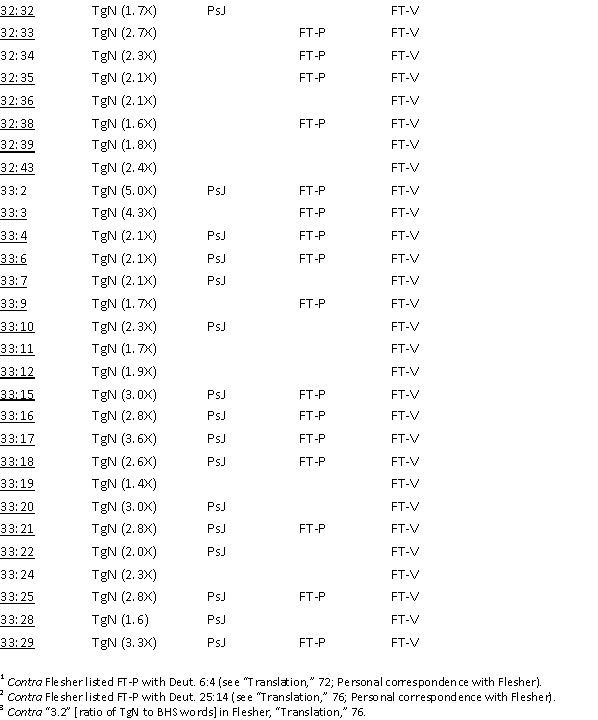
[i] See Paul V. M. Flesher,
“Translation and Exegetical Augmentation in the Targums to the Pentateuch,”
29-86, in Jacob Neusner and Ernest S. Frerichs, eds., New Perspectives on Ancient Judaism, vol. 3, Judaic and Christian Interpretation of Texts: Contents and Contexts
(Lanham, Md.: University Press of America, 1987); Paul V. M. Flesher, “Mapping
the Synoptic Palestinian Targums of the Pentateuch,” 247-53, in D. R. G.
Beattie and Michael J. McNamara, eds., The
Aramaic Bible: Targums in their Historical Context, Journal for the Study
of the Old Testament Supplement Series, ed. David J. A. Clines and Philip R.
Davies, no. 166 (Sheffield: Sheffield Academic Press, 1994). Flesher has
developed and applied these ideas more fully in regard to the Palestinian
Targumim of Gen. 28-50 in “Exploring the Sources of the Synoptic Targums to the
Pentateuch,” 1: 101-34, in Paul V. M. Flesher ed., Targum Studies, vol. 1, Textual
and Contextual Studies in the Pentateuchal Targums, South Florida Studies
in the History of Judaism, ed. Jacob Neusner
et al., no. 55 (Atlanta: Scholars Press, 1992). Through a series of
agreements, disagreements, and deductions, Flesher has further argued that the
agreements between TgN and FT-V are a part of what Flesher has called
“proto-Palestinian Targumim.” The Fragment Targum mss.
[ii] See Flesher, “Translation,”
65-67. McNamara regards TgN Numbers 22-24 expansions as old traditions within
the targum based upon comparisons with documents from
[iii] Adapted from Flesher,
“Exploring,” 125.
[iv] The information for list of the
Proto-Palestinian Targumim traditions is adapted and modified from Flesher,
“Translation,” 70-85. The material on Genesis 28-50 is augmented from Flesher,
“Exploring,” esp. 130-34. There are also a few minor changes noted ad loc (based on personal correspondence
with Paul V. M. Flesher, 1999).
[v] Several parallel passages among
Genesis Targumim are listed in Flesher, “Exploring” (130-34) which are not
included in here because they are either less than fifty percent longer than
the MT or are not attested in TgN––28:22 TgN, PsJ, E; 30:15 TgN, PsJ, E; 32:21
TgN, C; 32:29 TgN, C; 33:4 PsJ, FT-P, FT-V; 33:10 TgN, PsJ; 37:33 PsJ, FT-P,
FT-V, C, E; 38:9 TgN, PsJ; 38:21 TgN, D; 38:26 TgN, PsJ, FT-P, FT-V, D, E; 39:9
TgN, E; 41:44 TgN, PsJ, E; 43:14 TgN, PsJ, FT-P, FT-V, D; 46:30 TgN, PsJ, FT-P,
D; 48:4 TgN, D, Z; 48:16 TgN, D, Z; 48:20 D, Z [PsJ contains different
tradition].
[vi] Regarding data on C, D, E, Z see
Flesher, “Exploring,” 130-34; Flesher “Translation,” 68.
[vii] See Michael L. Klein, The Fragment Targums of the Pentateuch
According to their Extant Sources, 2 vols., Analecta Biblica
Investigationes Scientificae in res Biblicas, no. 77 (Rome: Biblical Institute
Press, 1980).
[viii] See Flesher, “Translation,” 68-81.